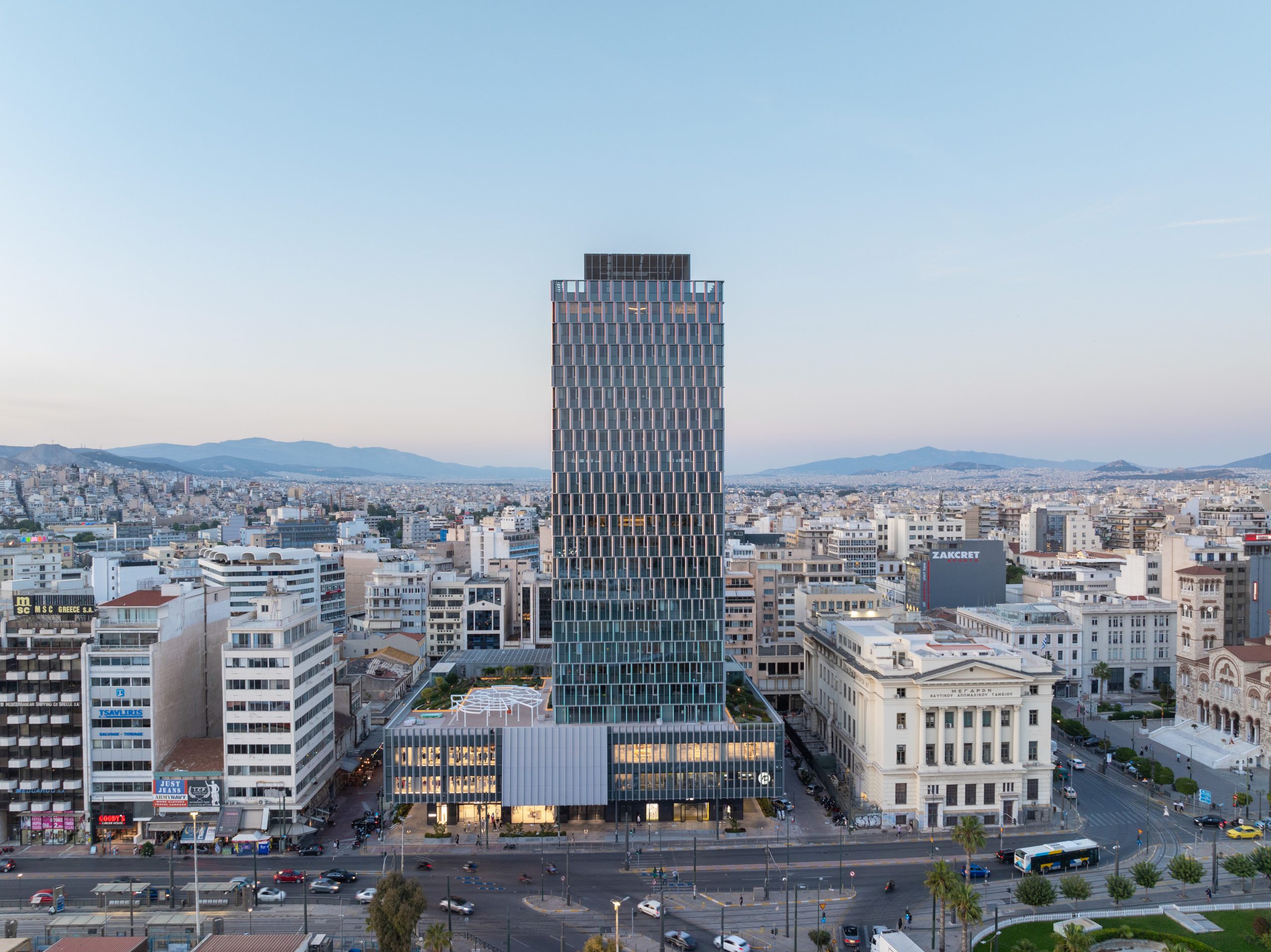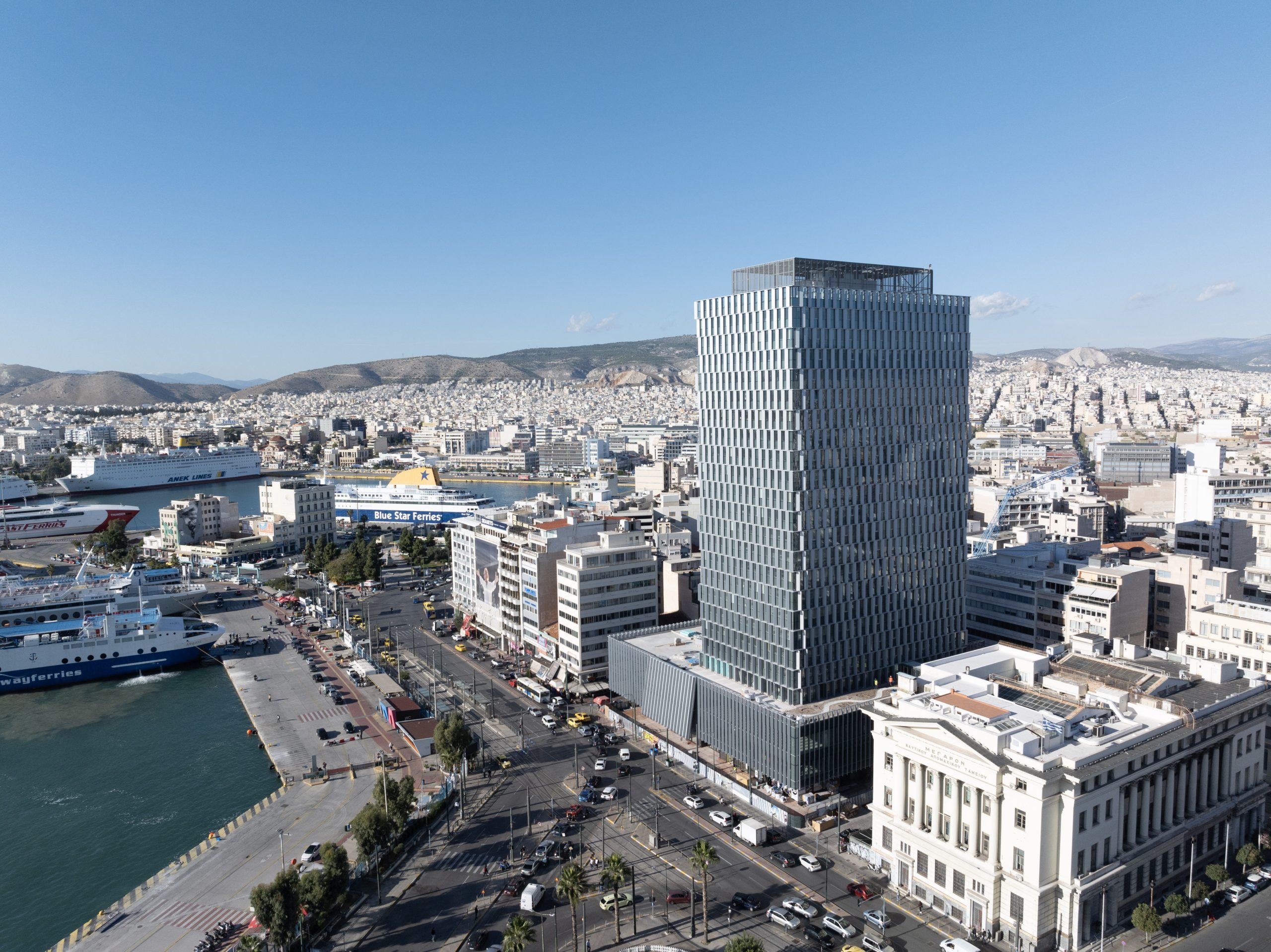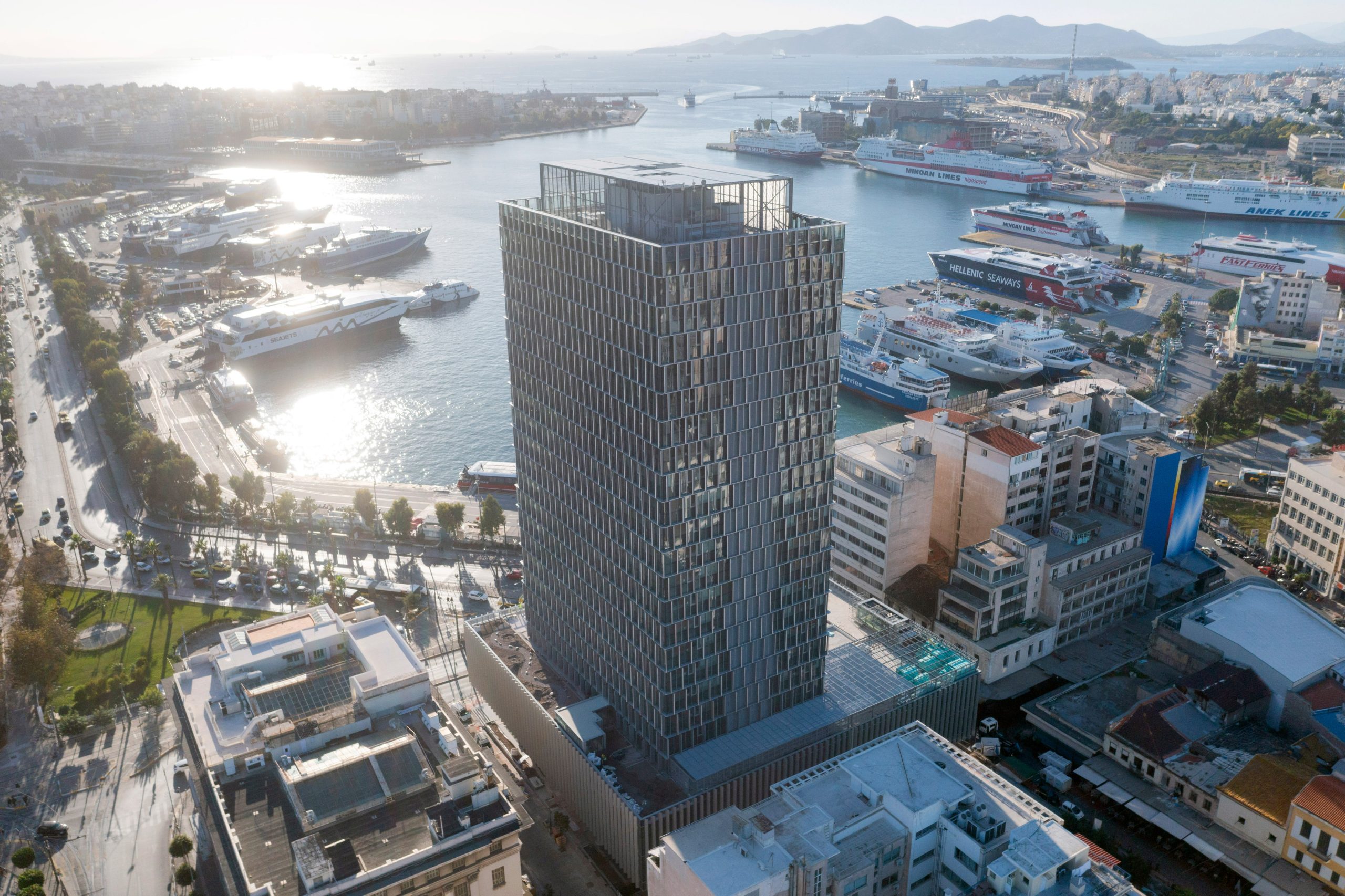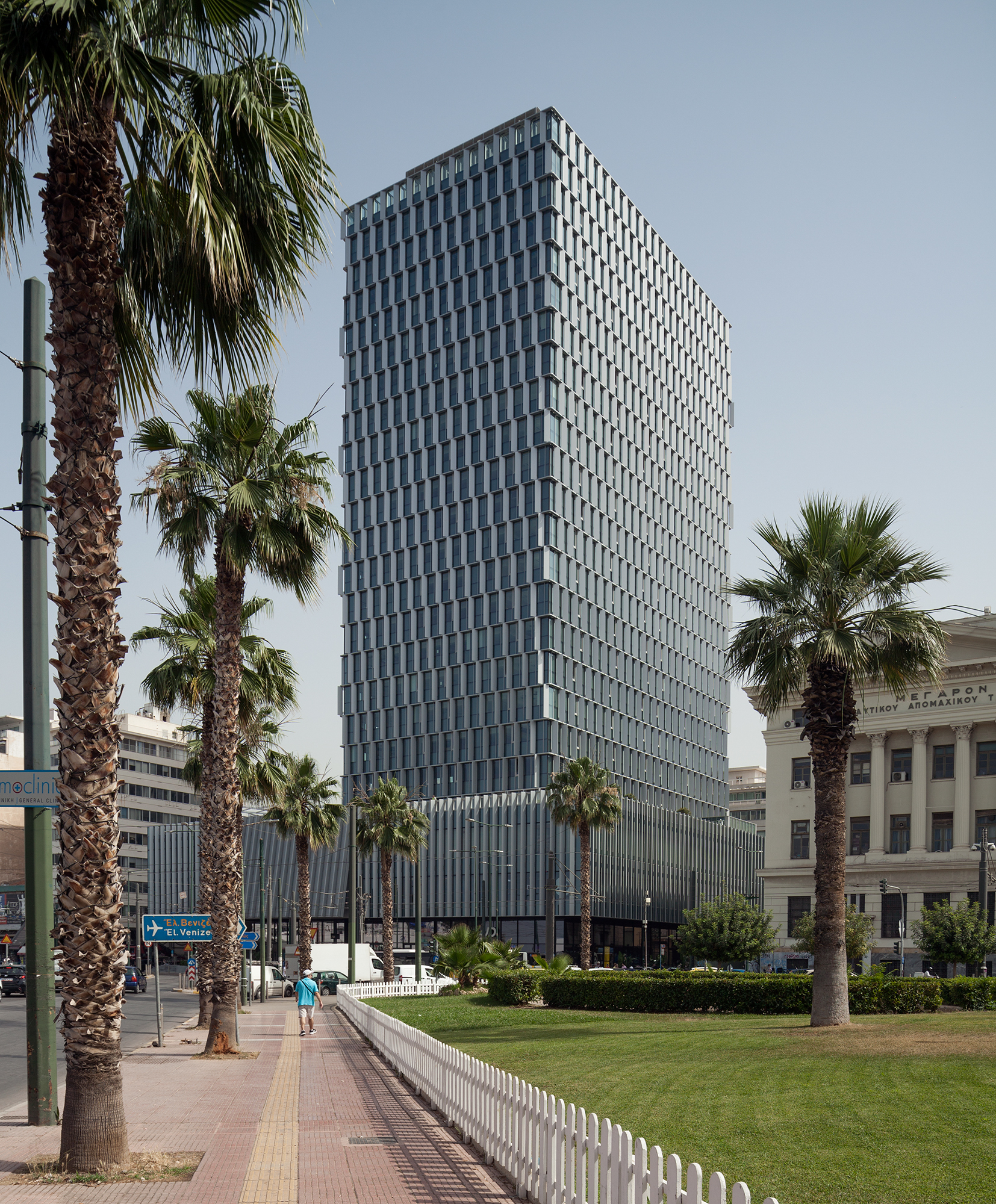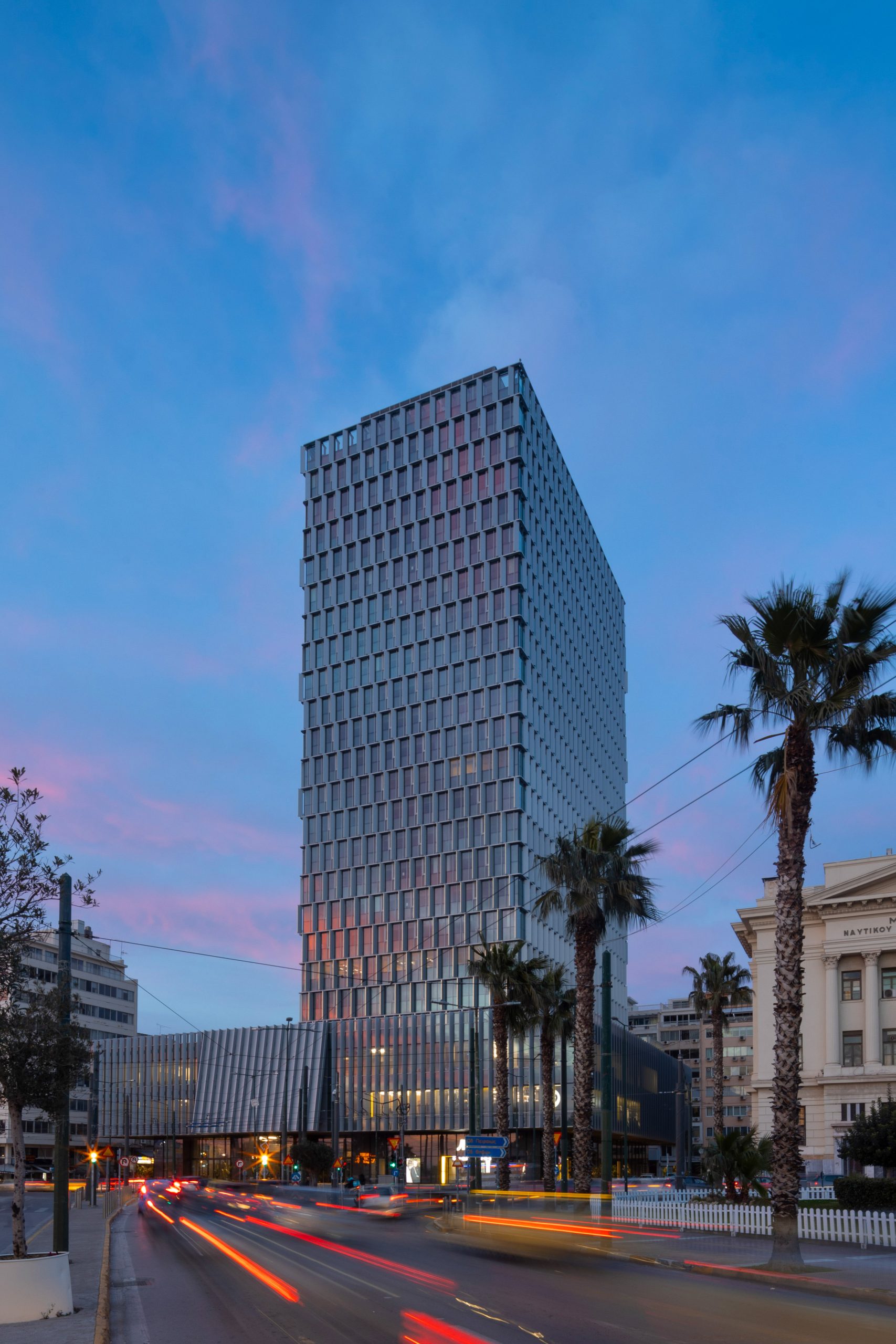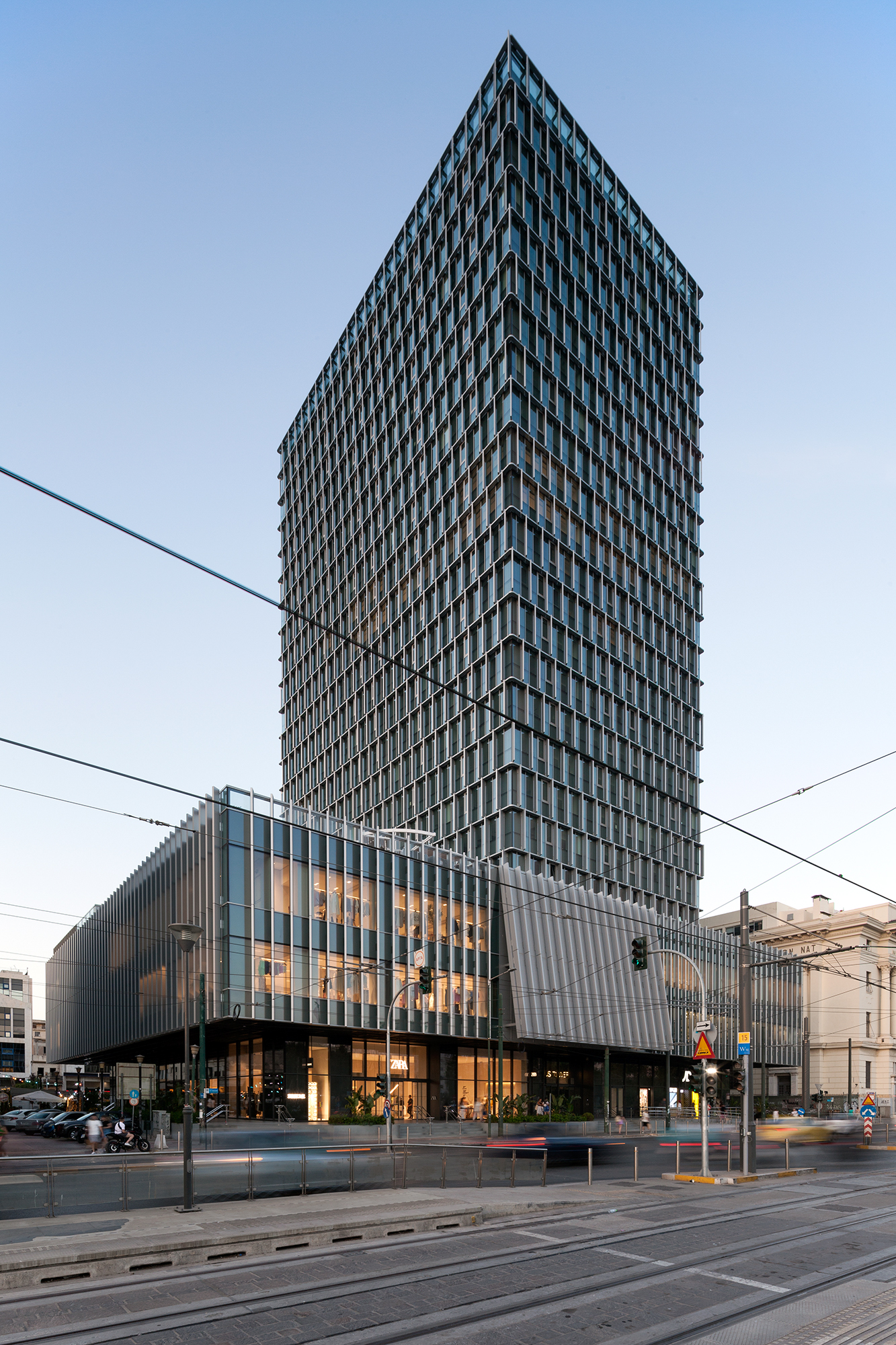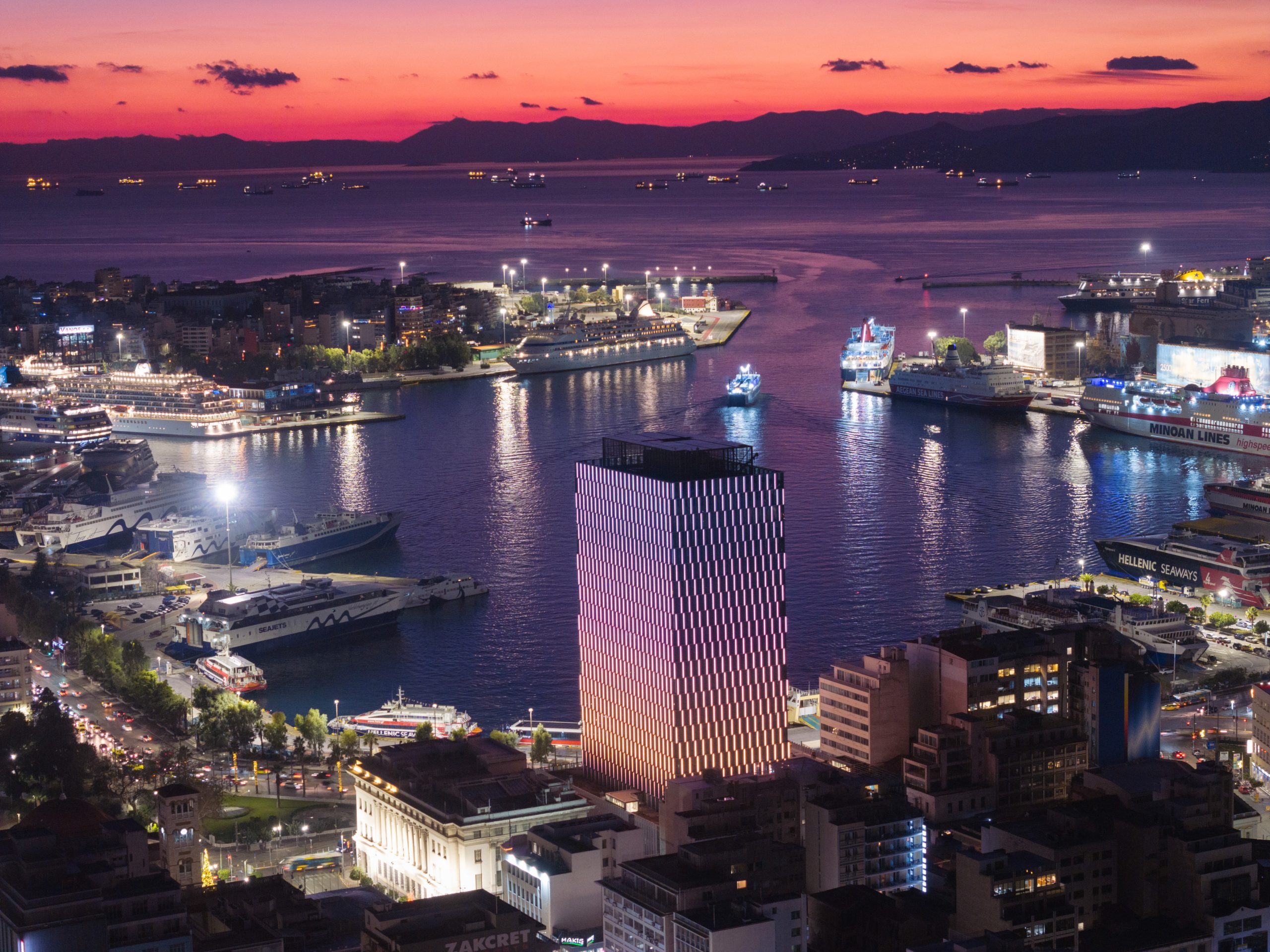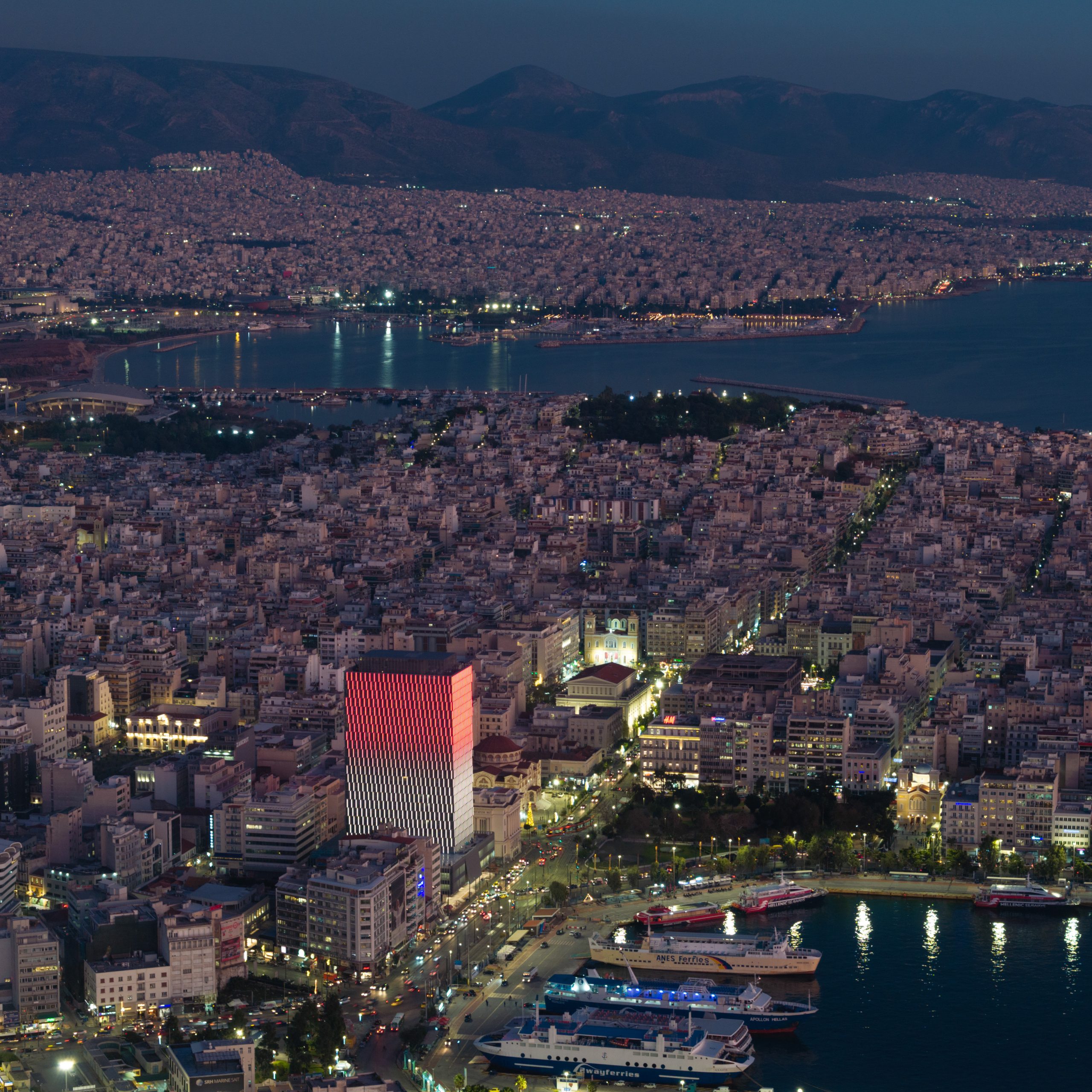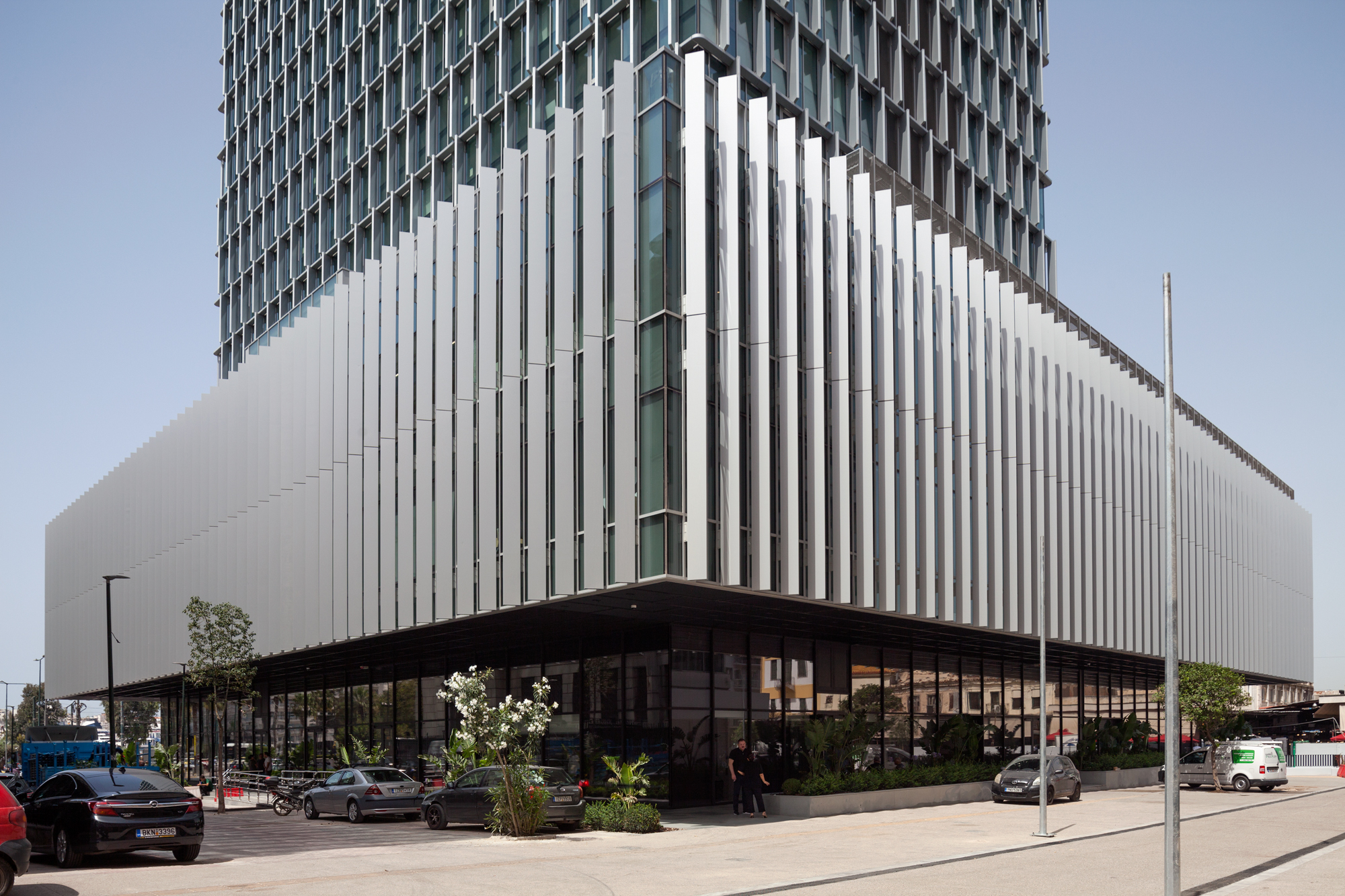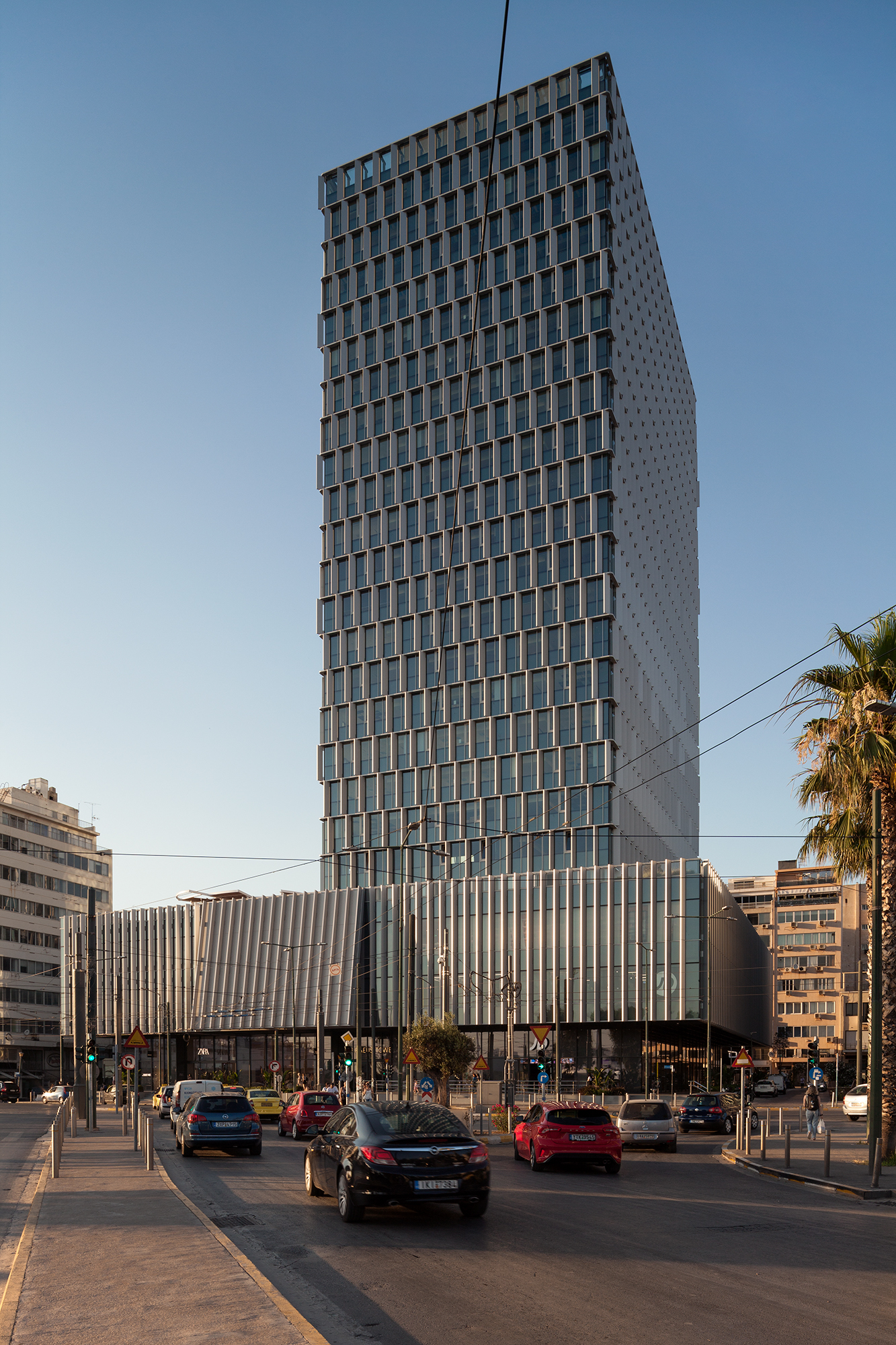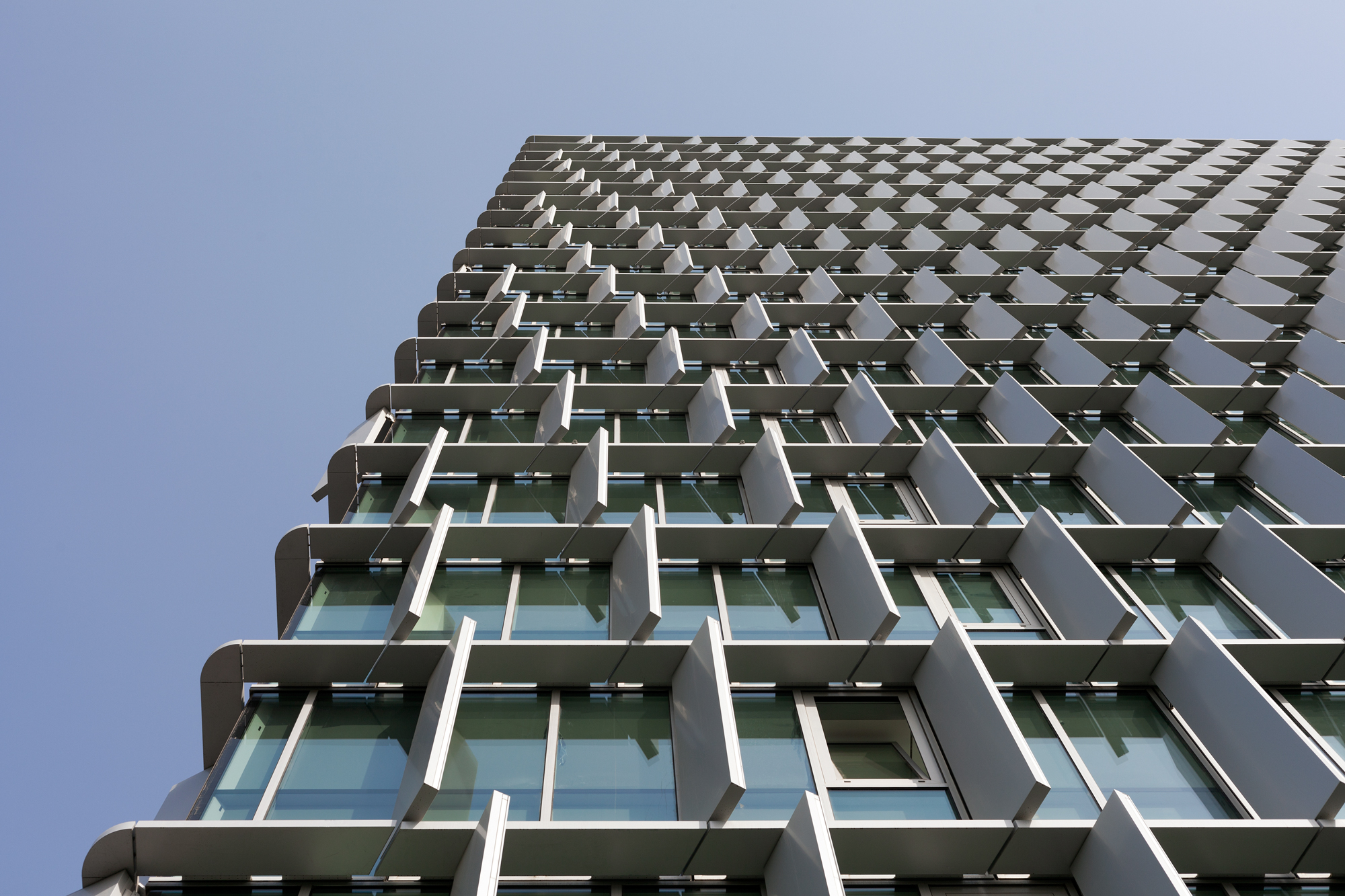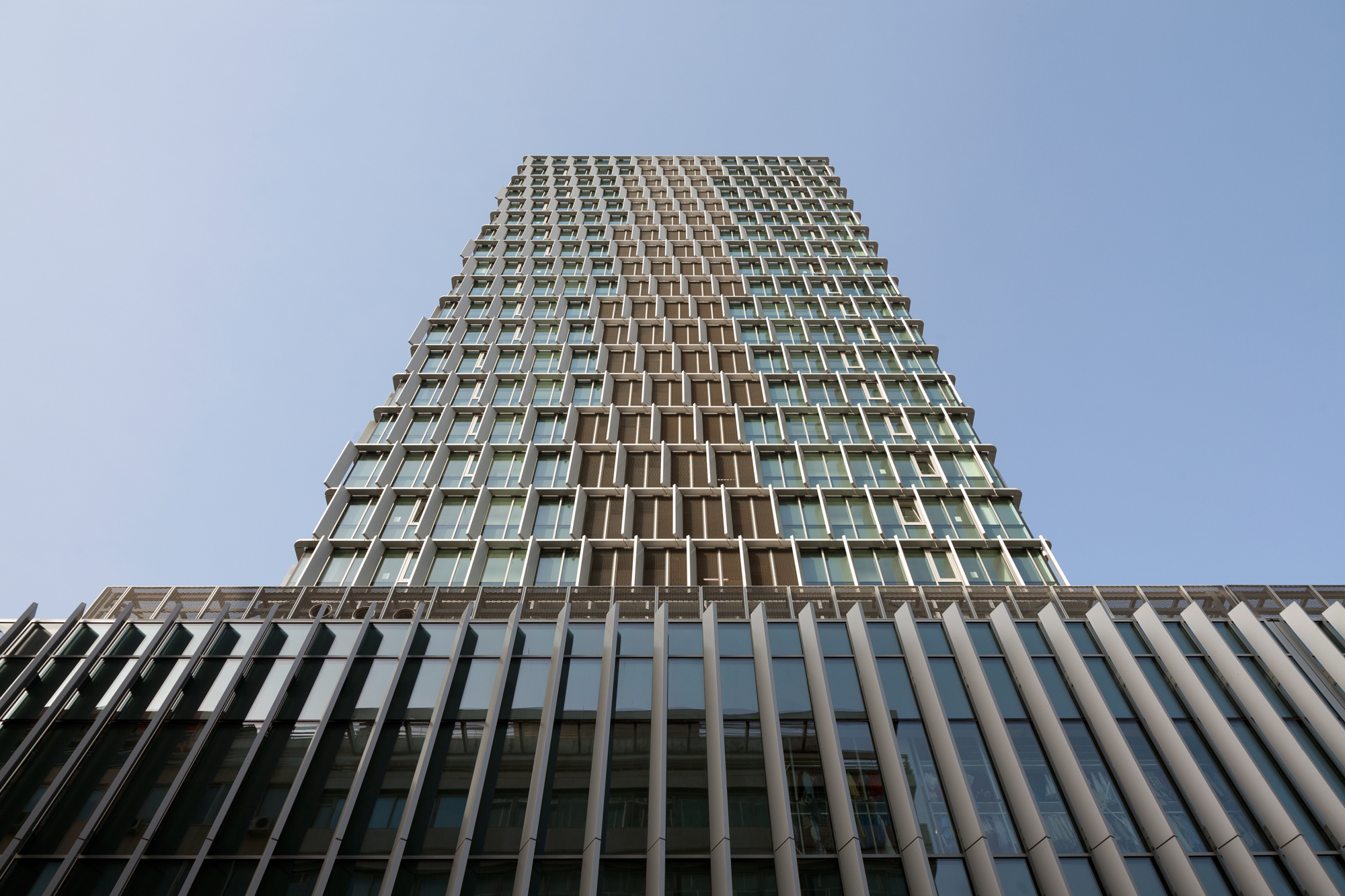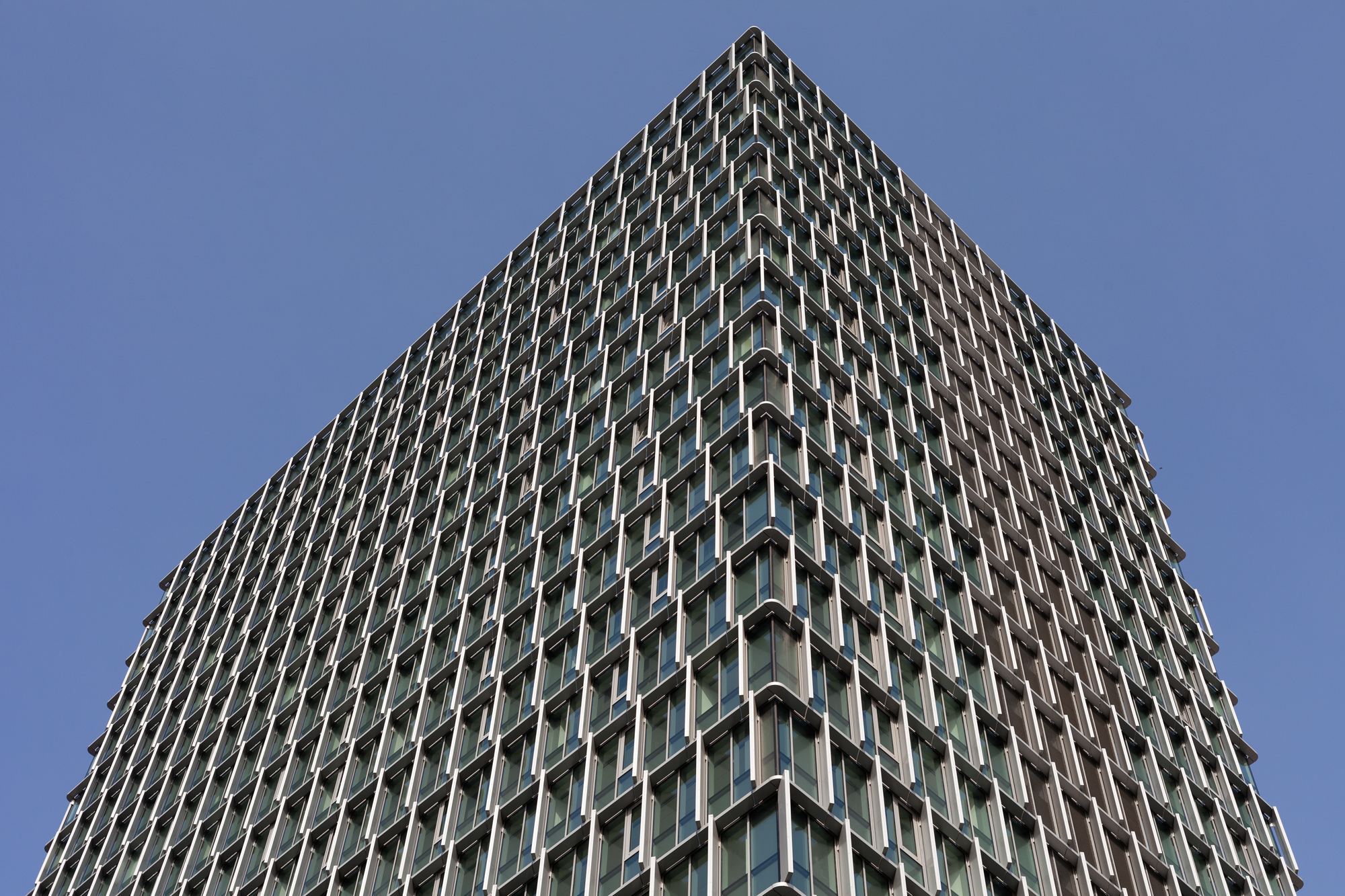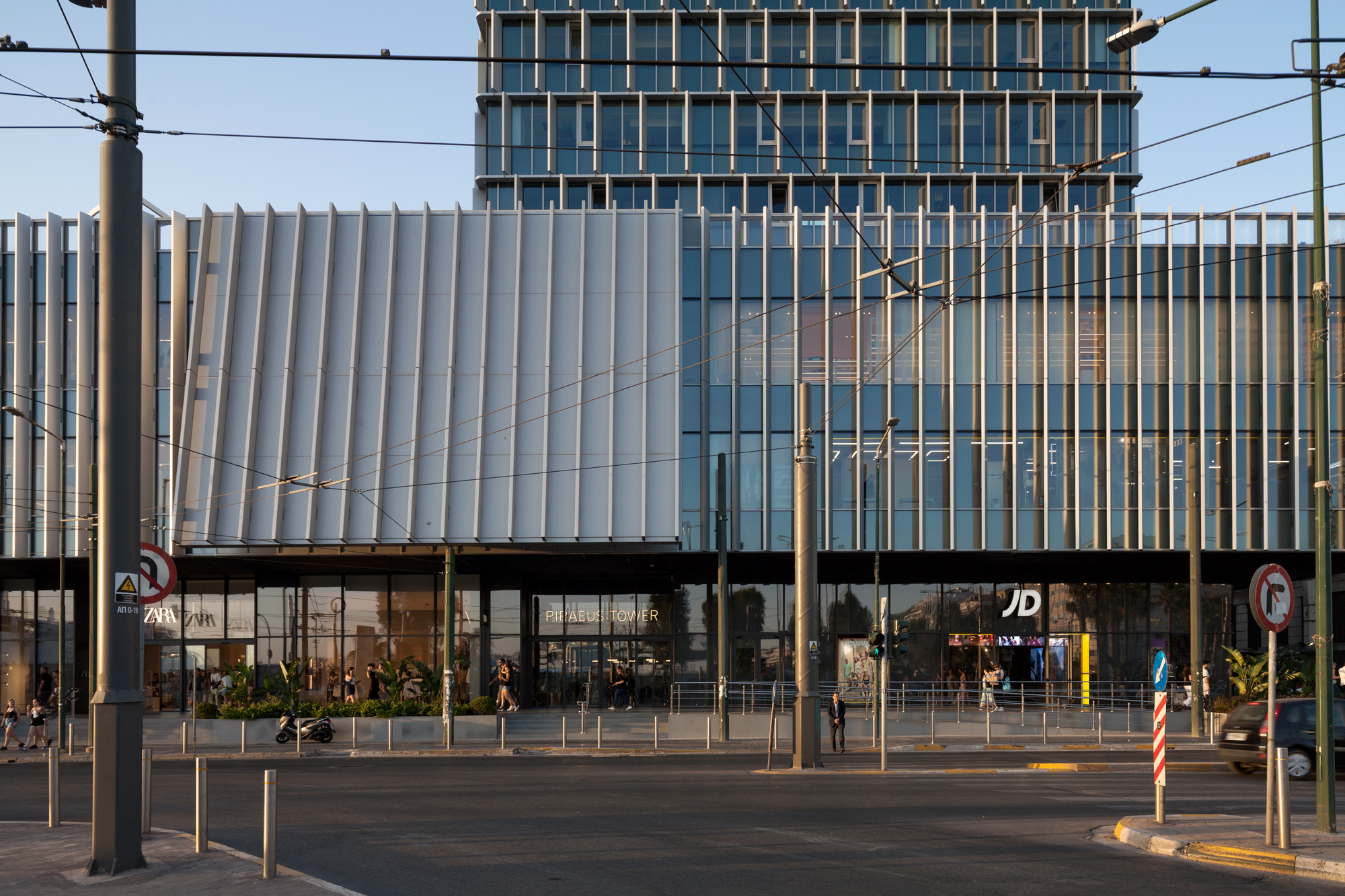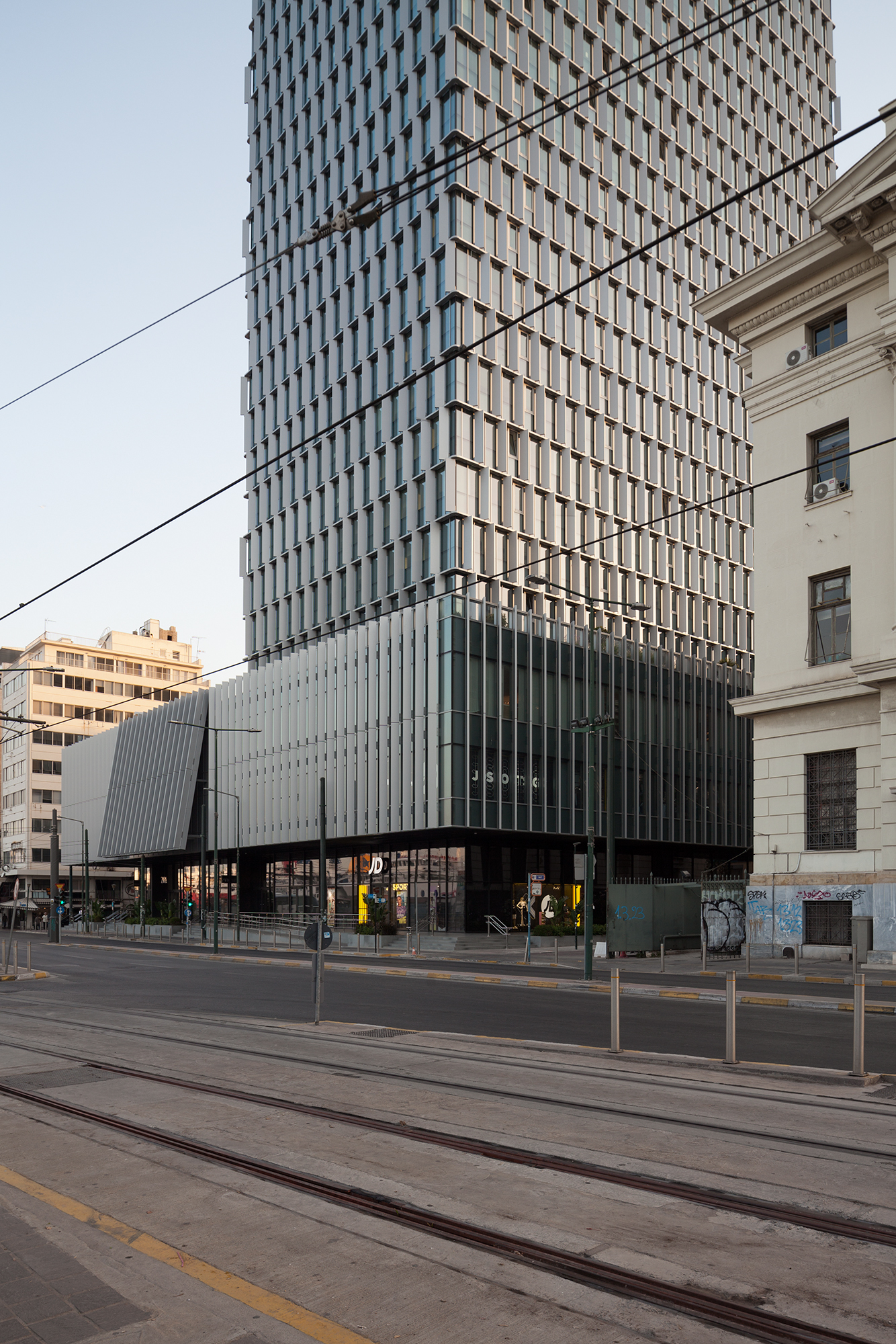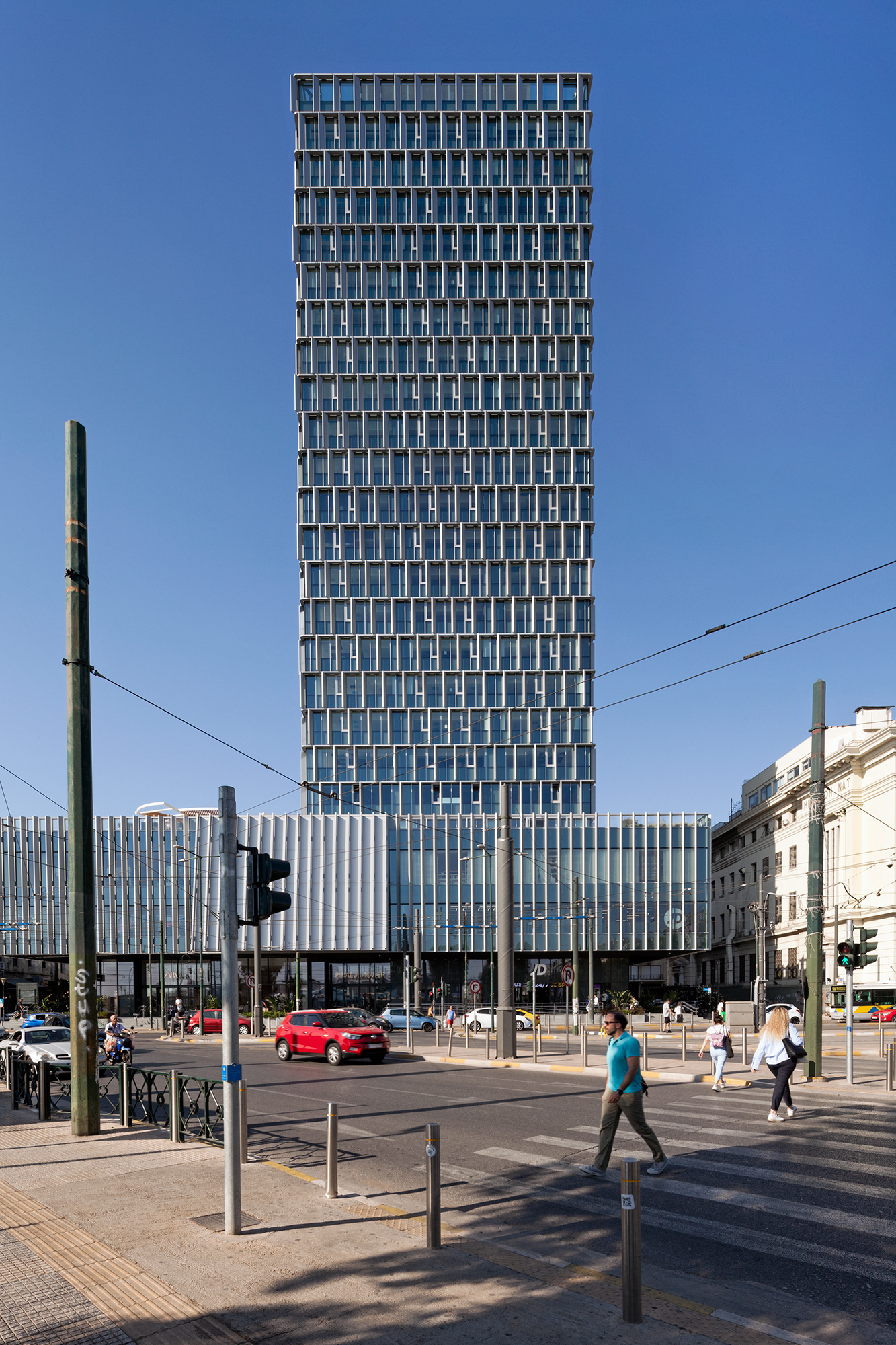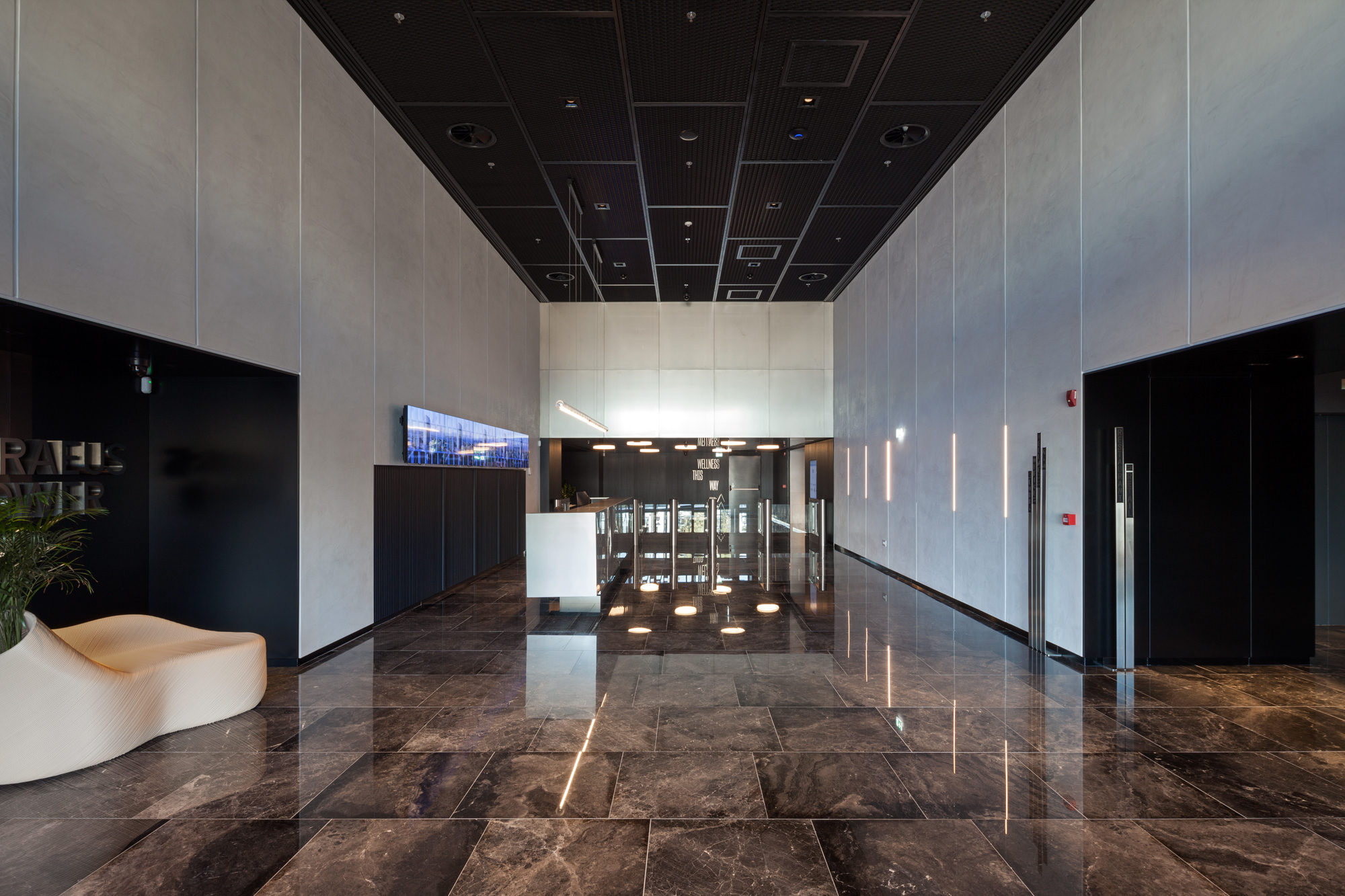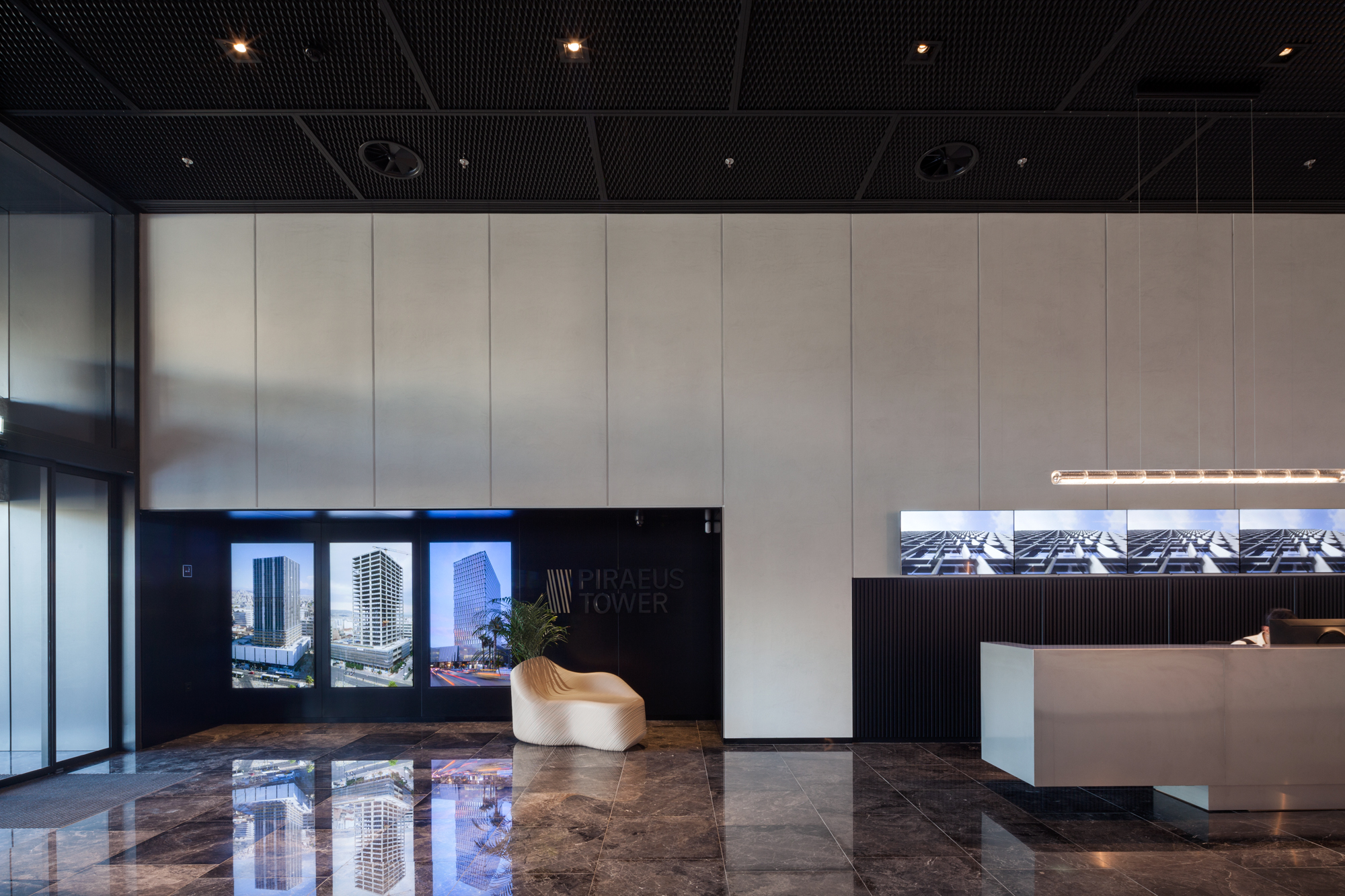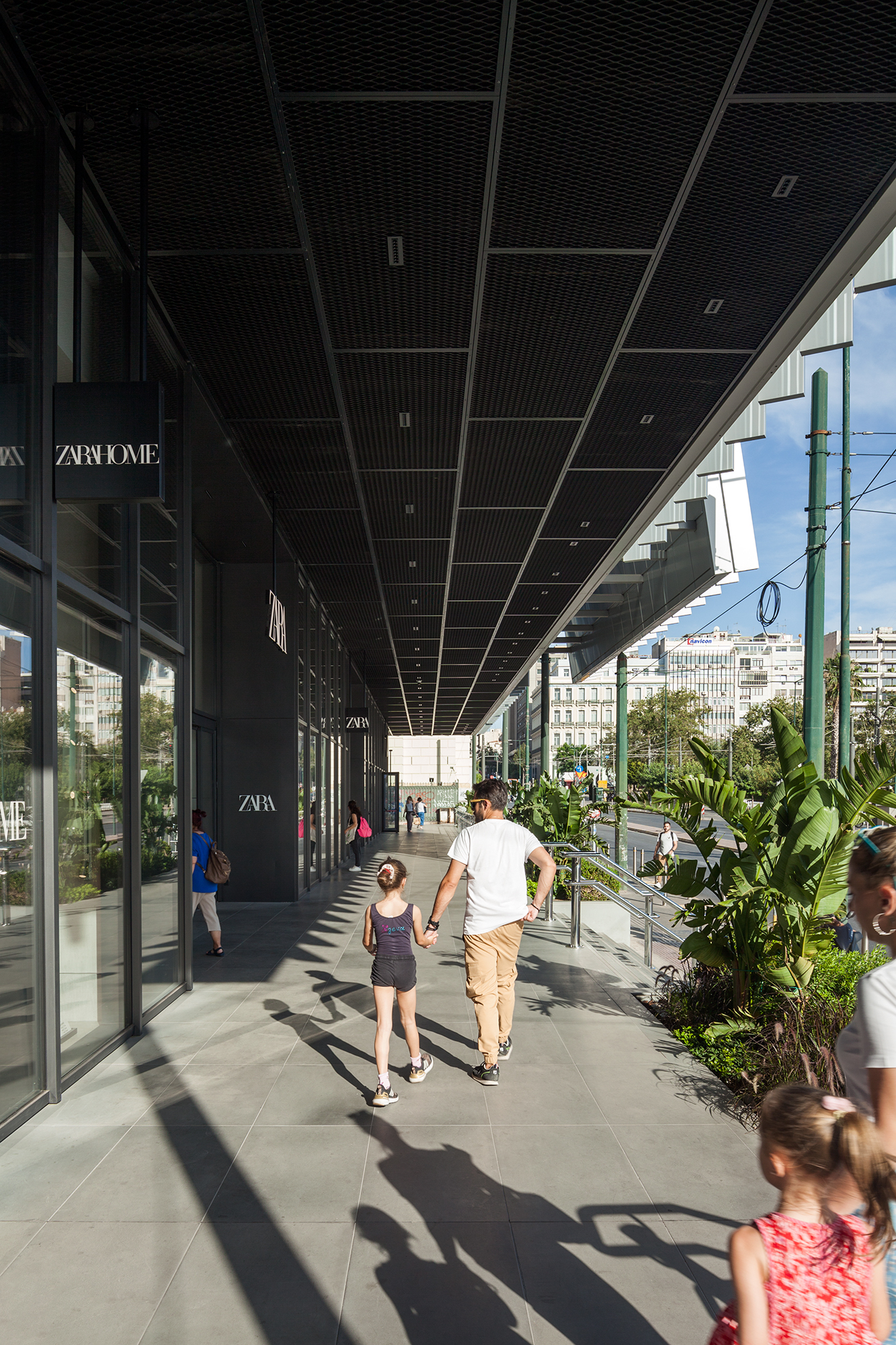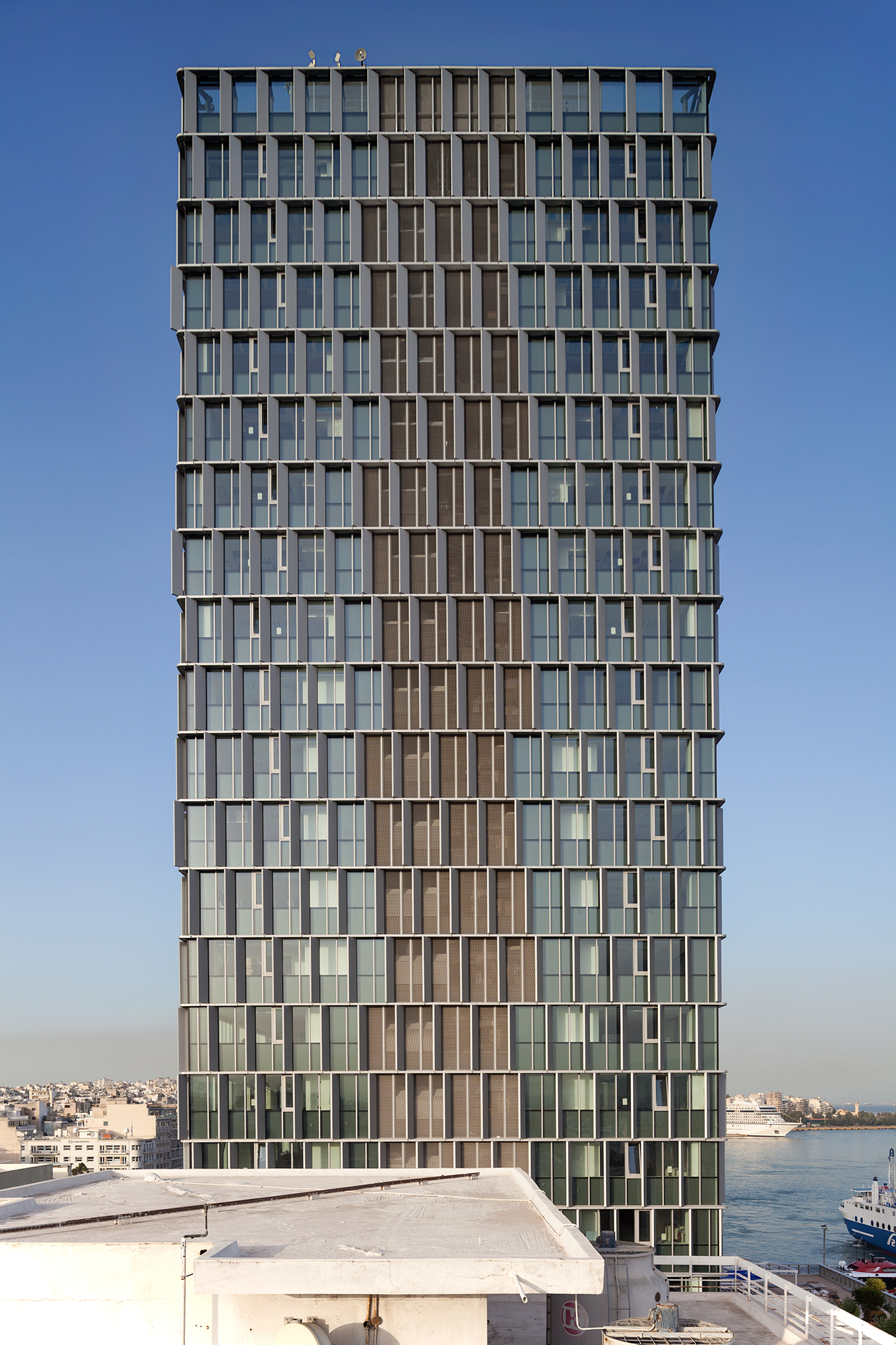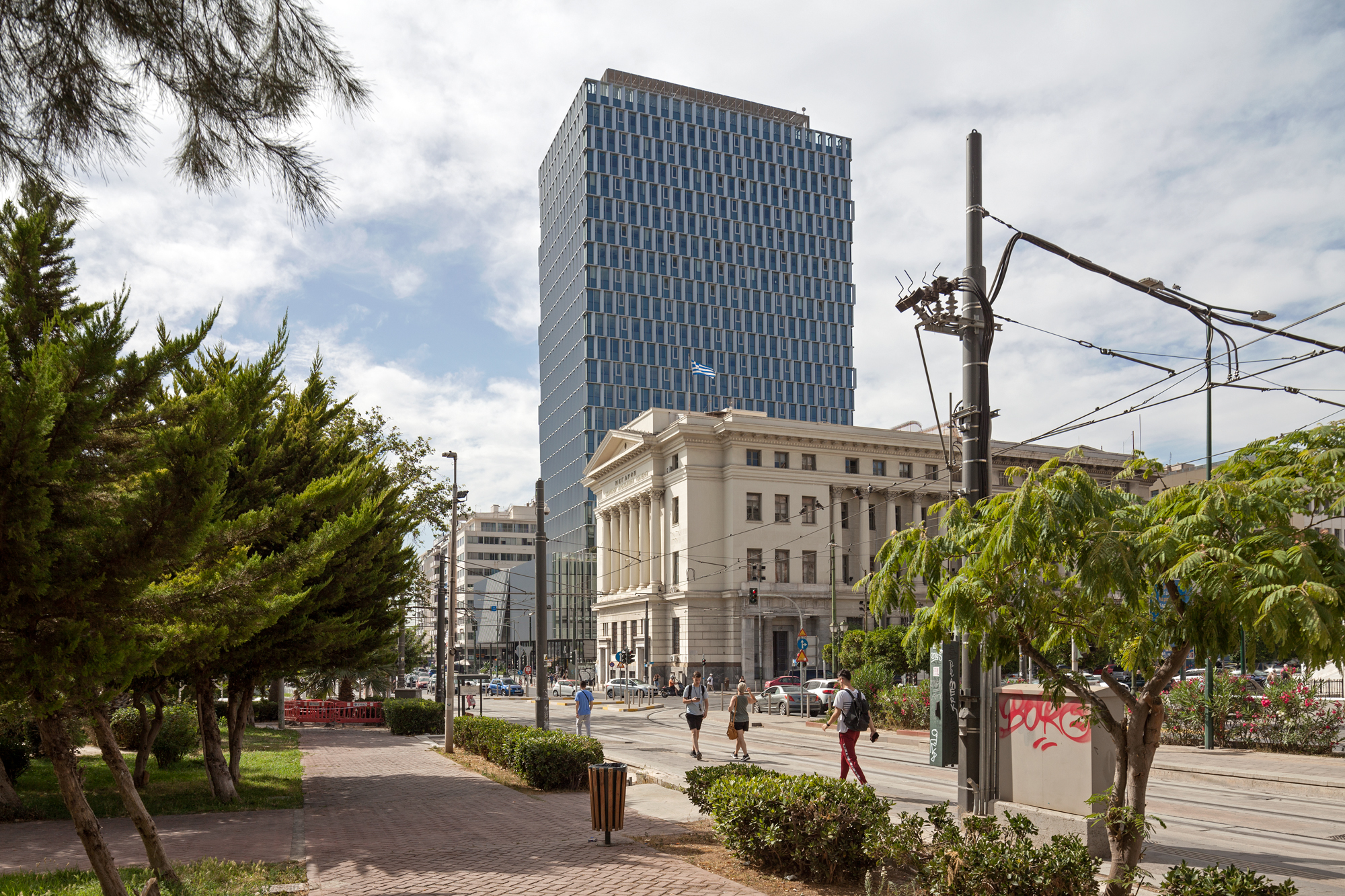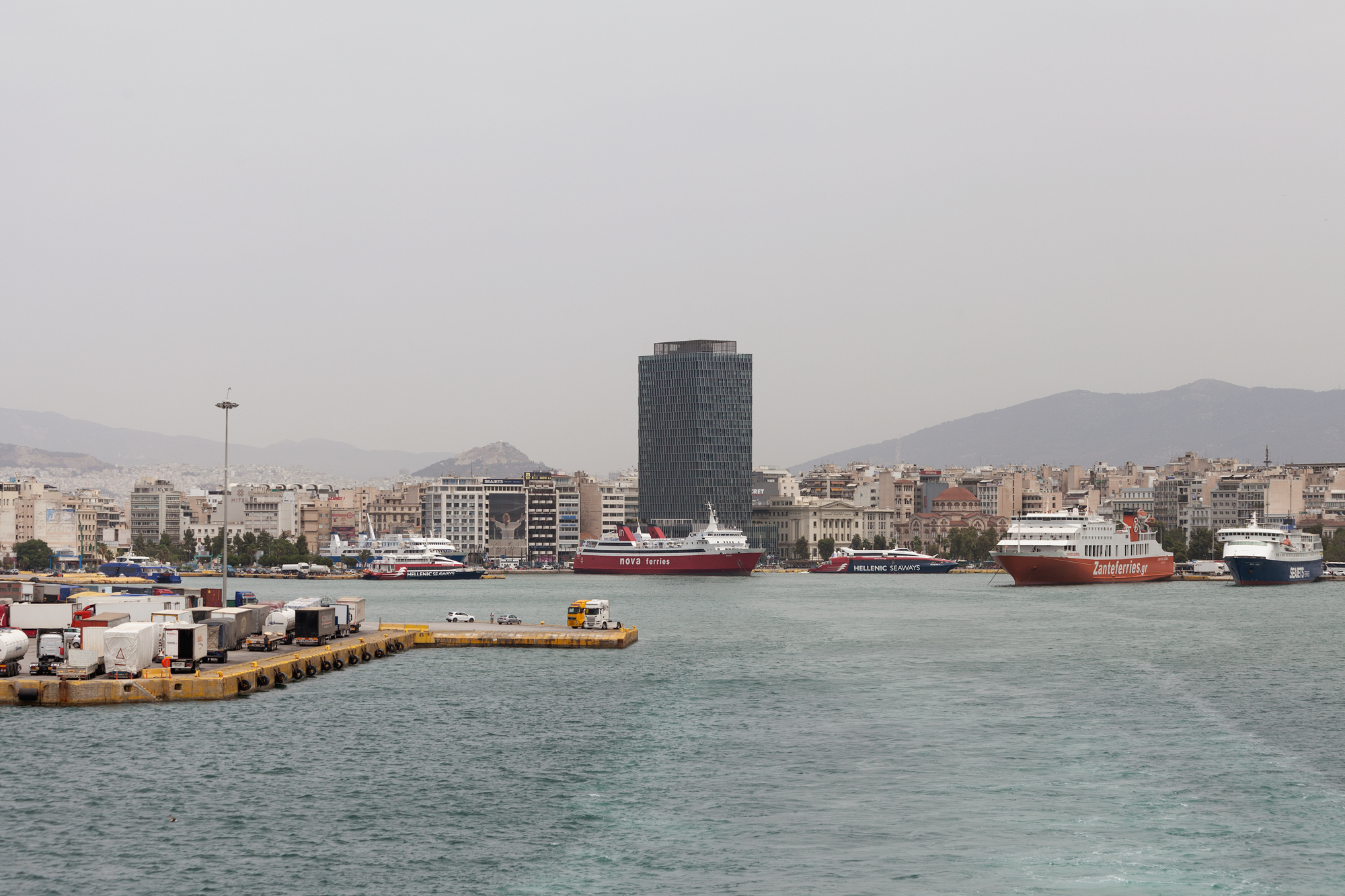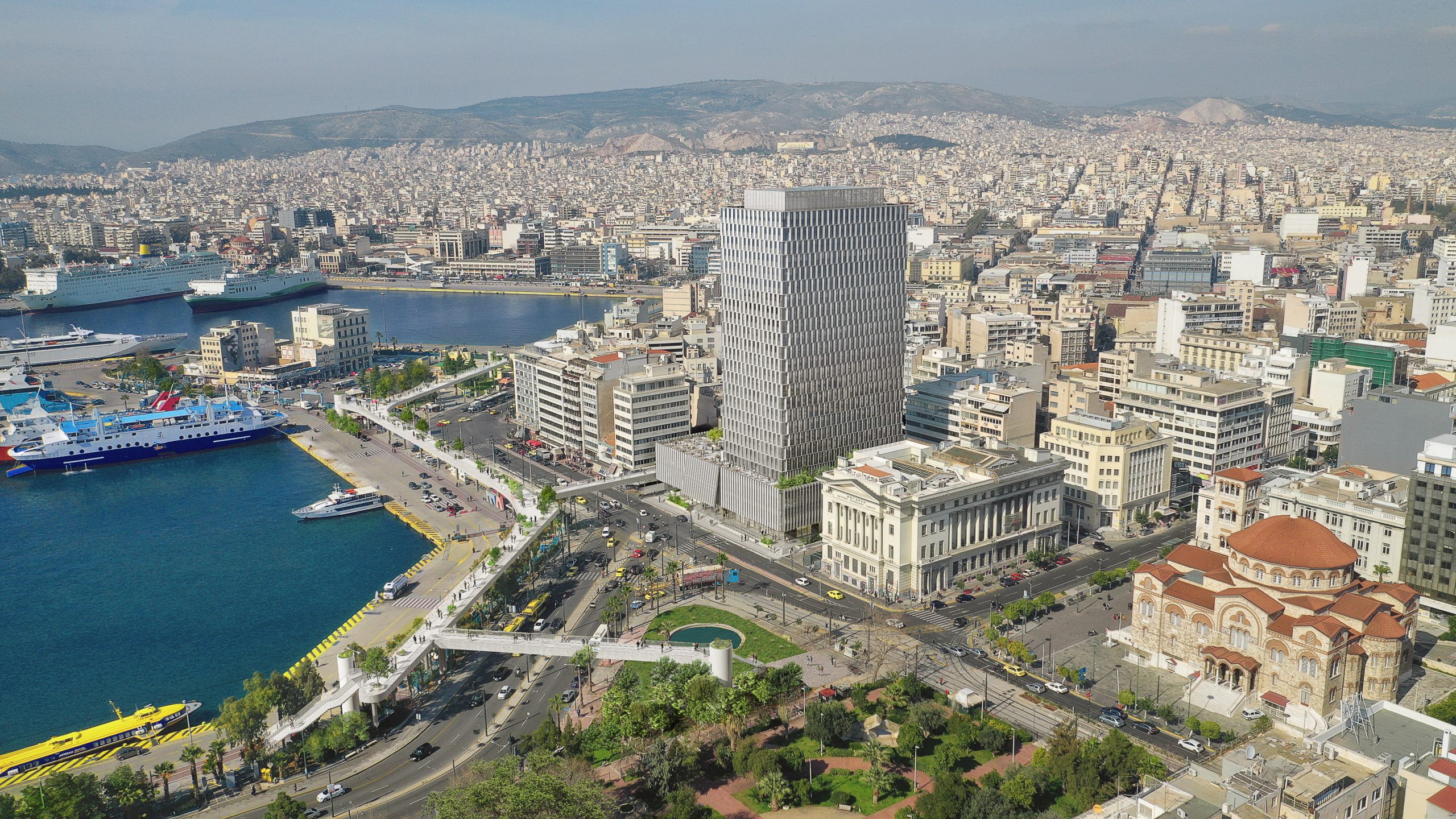PIRAEUS TOWER
Mixed use
PIRAEUS TOWER
Mixed use
Piraeus Tower is the tallest structure at the port of Piraeus and the second tallest building in Greece after the Tower of Athens. With a height of 88 meters, its presence dominates the image of the port for five decades. The original tower designed by the architects I. Vikelas, G. Molfesis and A. Loizou was completed in 1975 but the interior has never been occupied, except for the first three floors.
Being dormant since 1975, the City of Piraeus with a consortium of investors, transformed the inactive structure into a mixed-use tall building, of which PILA designed its new facade for the ‘rebirth’ of Piraeus Tower. They are also the designers of all interior common spaces accessible to office visitors and tenants.
The awakening of the “sleeping giant”, as the abandoned structure was often called, coincides with the emergence of Piraeus as a vibrant contemporary urban neighborhood. Besides being a global transportation hub, Piraeus is increasingly becoming one of the most exciting neighborhoods for living, working, and culture.
The retrofit of Piraeus Tower exemplifies adaptive reuse at its finest. By reimagining existing structures, it transforms the city into a more sustainable and livable environment.
PILA’s design approach for the new facade transforms the structure of the tower into a dynamic landmark that reflects the vibrant energy of the aspiring district of Piraeus. The architectural proposal envisions a structure that is visually intriguing and incorporates strategies designed to drastically reduce the energy consumption of the building.
The facade is designed to integrate the tower into the daily life of the city and to enhance the lives of citizens and the users of the building. The design mediates between the scale of the city and that of Piraeus Tower, engaging the prospect of offering welcoming exterior spaces and sharing breathtaking views.
A shading structure consisting of vertical and horizontal overhangs clads the volume of the tower. Each vertical fin is horizontally displaced from one floor to the next, creating a spring pattern that wraps around the building. The pattern appears to gently slide from one facade to another, with the resulting visual effect of the facade wrapping around the tower as a piece of fabric. This dynamic pattern appears different from various locations, creating a rich visual experience that is constantly transforming, depending on where one is standing.
To further emphasize the ‘movement’ visual effect of the facade, the vertical fins rotate as they rise towards the top of the structure. The rotation of fins is tuned to the optimal shading performance of the building, and amplifies the panoramic views offered by the property. This approach allows for a specific treatment of each facade depending on environmental requirements and view opportunities, but also ensures a unified treatment of the volume.
The design of the facade overhang system is a result of an ambitious sustainability and energy conservation strategy. Upon a meticulous solar study the vertical and horizontal louvers of the tower are calibrated in order to reduce solar gain on the facade by 50%, resulting in a 20% reduction of the overall energy demand of the building.
The building aims to be the first LEED Platinum certified tower in Greece and has enrolled in the WELL Core ™ programme to ensure the health and wellbeing of its tenants and end-users with an additional A++ EPC rating. The pre-existing glazing was separated by the rest of the removed facade elements for recycling and reuse; 126 tonnes of glass were recycled. Every floor is able to be independently operated through smart systems (BMS). The rooftop has 500sqm of installed photovoltaic panels, and the building operates the most up to date cooling and heating systems. The basements offer charging spaces, and six water tanks to reuse collected greywater.
The facade lighting features sequences of colors and luminous intensities that were developed on all the fins of the Tower and help make the iconic beacon seen at night in the port city. While on special occasions the facade is lit with unique colors, the permanent sequence features a warm white color. This is chosen after studies were conducted for the best environmental conditions to have a mild intensity that protects against light pollution and energy consumption. The energy required to light up the tower each night is equal to the energy consumed by two home A/C units.
Amongst other awards, the facade design of Piraeus Tower by PILA has been awarded a 2024 CTBUH Facade Award of Excellence.
